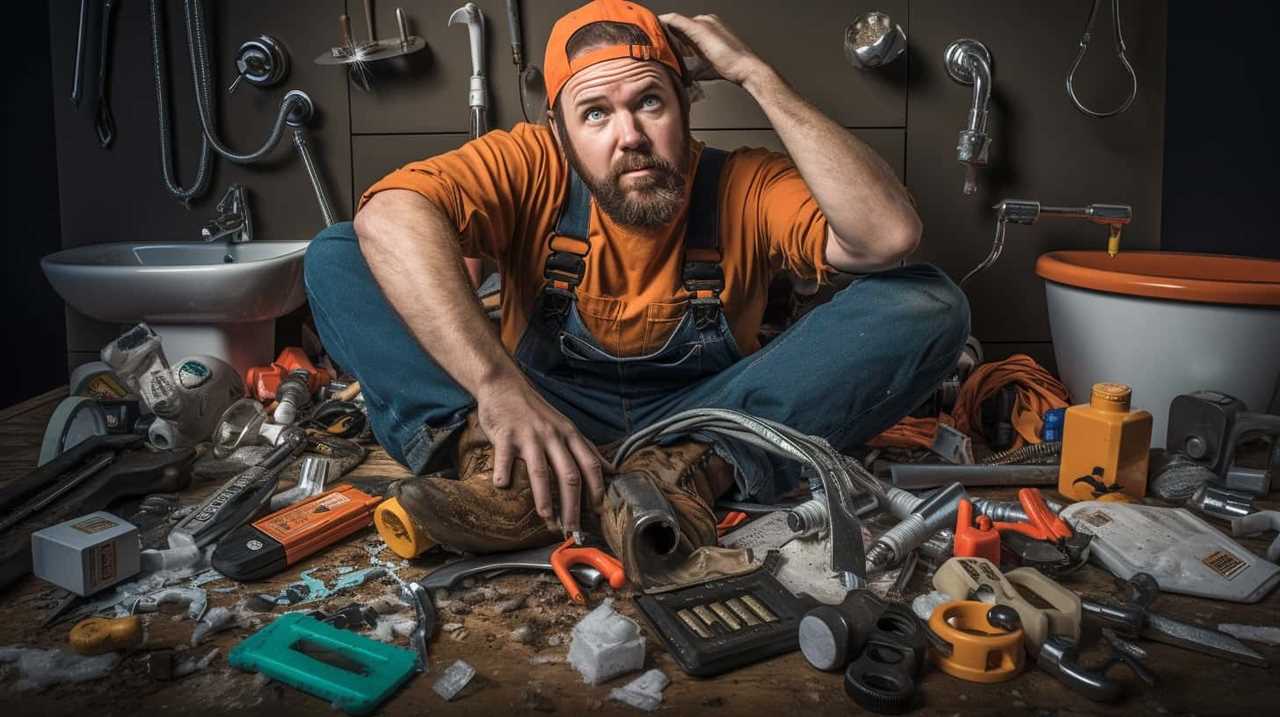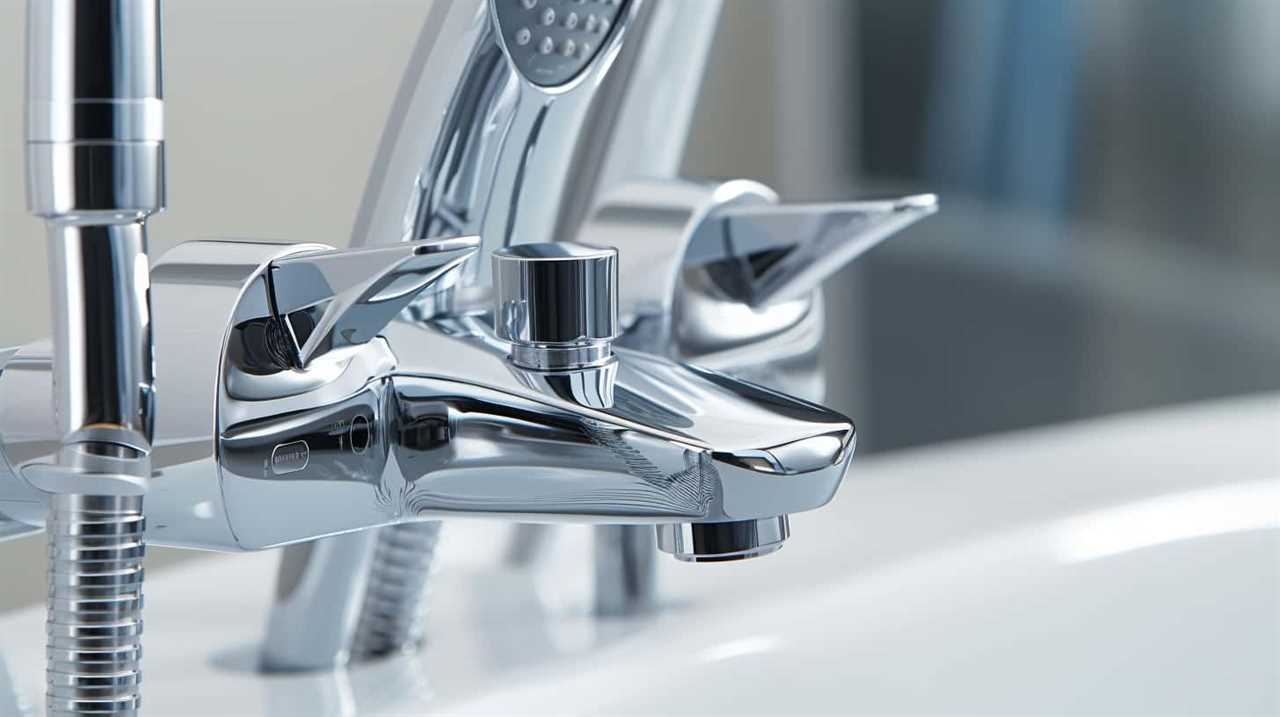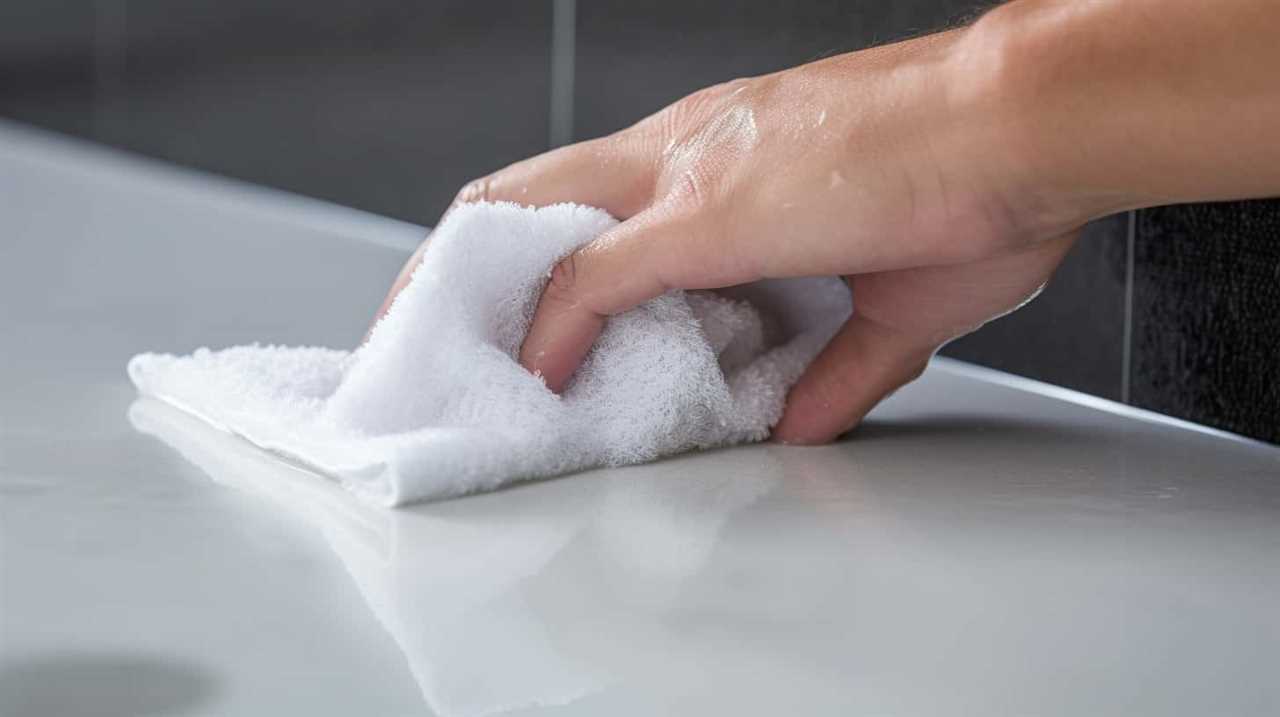Are you aware that an uneven toilet can lead to numerous issues in your bathroom? From leaks to ineffective flushing, a toilet that is not level can cause significant problems.
In this article, we’ll explore the importance of leveling your toilet and provide step-by-step instructions on how to do it.
By maintaining a level toilet, you can ensure optimal performance and longevity.
So let’s dive in and master the art of toilet leveling!

Key Takeaways
- Leveling your toilet is important to prevent problems such as leaks and improper flushing.
- An unlevel toilet can create an unbalanced look in your bathroom.
- Proper leveling during installation ensures stability and functionality.
- Maintaining a level toilet helps to prevent potential issues and promote longevity.
The Importance of Leveling Your Toilet
Leveling your toilet is crucial for its stability and functionality. There are common misconceptions about leveling toilets that need to be addressed.
Some may believe that a slightly unlevel toilet isn’t a big deal, but this isn’t true. Even a slight tilt can lead to problems such as leaks and improper flushing.
Additionally, an unlevel toilet can have a significant impact on bathroom aesthetics. It can create an unbalanced and visually unpleasing look, throwing off the overall design of the space.
To avoid these issues, it’s important to ensure that your toilet is properly leveled during installation. This won’t only ensure its stability and functionality but also contribute to a visually pleasing bathroom environment.

Potential Issues With an Unlevel Toilet
We have encountered several potential issues that can arise when a toilet isn’t level.
Here are four common causes of an unlevel toilet and the effects it can have on plumbing:
- Uneven weight distribution: When a toilet isn’t level, the weight of the user isn’t evenly distributed across the wax ring, which can lead to leaks and damage to the seal.
- Improper flushing: An unlevel toilet may not have the correct water level in the bowl, affecting the flushing mechanism and causing inadequate waste removal.
- Clogging: An unlevel toilet can cause waste to accumulate in certain areas of the bowl, leading to frequent clogs and backups in the plumbing system.
- Stress on pipes: If a toilet isn’t level, it can put unnecessary stress on the pipes, leading to cracks, leaks, and even burst pipes.
It is crucial to ensure that your toilet is level to avoid these potential issues and maintain the optimal functioning of your plumbing system.
How to Determine if Your Toilet Is Level
To determine if your toilet is level, one can use a simple tool and follow a few steps to ensure proper alignment. Common signs of an unlevel toilet include water pooling around the base, a rocking motion when sat upon, and difficulty flushing properly.

To begin the leveling process, you’ll need a level, preferably a small torpedo level, and a wrench or adjustable pliers. Start by placing the level across the back of the toilet seat. Adjust the toilet’s position by inserting shims or adjusting the toilet flange bolts until the bubble on the level is centered.
Once the toilet is level, tighten the bolts evenly, but be careful not to overtighten as this may crack the toilet base.
Steps to Level Your Toilet
To ensure proper alignment, it’s important to regularly level our toilets using a simple tool and follow a few steps. Here are the steps you need to follow to level your toilet during installation or when fixing an unlevel toilet:
- Start by turning off the water supply to the toilet.
- Place a level across the bowl rim and check for imbalance.
- If the toilet is unlevel, place shims under the low side of the base until it’s level.
- Once the toilet is level, tighten the nuts on the toilet bolts to secure it in place.
By following these steps, you can ensure that your toilet is properly aligned and functioning correctly.

Maintaining a Level Toilet for Longevity
For optimal longevity, it’s essential to consistently maintain a level toilet using proper techniques.
A level toilet not only ensures proper functioning but also prevents common toilet problems that can arise from an imbalanced position.
To maintain a level toilet, start with a proper toilet installation. Use a level to ensure that the toilet bowl is perfectly horizontal and the base is firmly seated on the floor. Check for any gaps or unevenness in the installation and make necessary adjustments.
Regularly inspect the toilet for any signs of movement or shifting. If you notice any, tighten the bolts or replace the wax ring if necessary.

Additionally, avoid placing excessive weight or pressure on the toilet, as this can cause it to become unlevel over time.
Frequently Asked Questions
Can an Unlevel Toilet Cause Damage to the Bathroom Flooring?
An unlevel toilet can cause damage to the bathroom flooring. Proper toilet installation and maintenance are crucial to prevent this issue. Regularly check and adjust the toilet’s level to avoid any potential damage.
How Can an Unlevel Toilet Affect the Overall Stability of the Bathroom Fixtures?
An unlevel toilet can wreak havoc on the stability of your bathroom fixtures. It can disrupt the proper flow of plumbing and lead to costly repairs. Professional installation is crucial to avoid these issues.
Are There Any Visible Signs That Indicate an Unlevel Toilet?
Visible signs of an unlevel toilet include uneven water levels, rocking, and leaks. Troubleshooting unlevel toilets involves checking the toilet’s base, flange, and wax ring for any issues. Proper leveling ensures stability and prevents future problems.

Can an Unlevel Toilet Lead to Leaks and Water Damage?
An unlevel toilet installation can lead to leaks and water damage. It is essential to ensure the toilet is level to prevent these issues. Proper leveling will help maintain the integrity of the seal and prevent any potential leaks.
What Are the Potential Consequences of Ignoring an Unlevel Toilet?
Ignoring an unlevel toilet can result in potential safety hazards and decreased toilet flushing efficiency. Can you imagine the consequences of an unstable toilet and inefficient flushing? It’s essential to address these issues promptly.
Conclusion
In conclusion, ensuring that your toilet is level is crucial for its proper functioning and longevity.
An unlevel toilet can lead to various issues such as leaks, clogs, and even structural damage.

By regularly checking and leveling your toilet, you can prevent these problems and maintain a smooth and efficient plumbing system.
So, take the time to ensure your toilet is level and enjoy a hassle-free bathroom experience.










